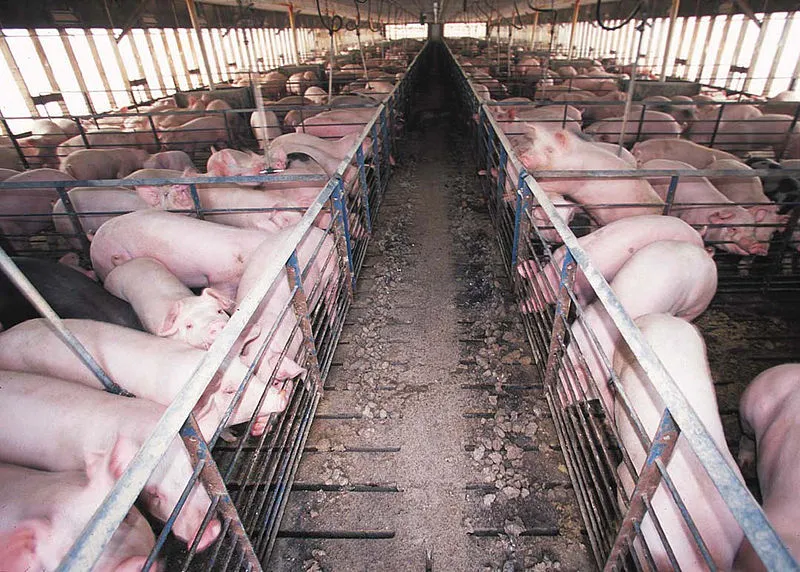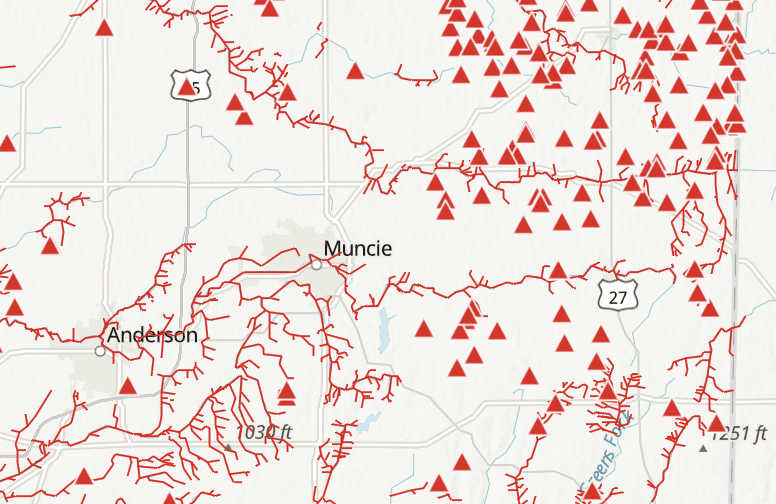
CAFOs’ Role in Polluting E. Central Indiana Waters
The expansion of industrial agriculture has created a new kind of farming system that is transforming the rural landscape of E. Central Indiana. Concentrated Animal Feeding Operations (CAFOs) are large-scale facilities that house thousands of animals in confined spaces. While these operations can produce large quantities of meat and dairy products at low costs, they also generate an enormous amount of waste and pollution.
CAFOs’ Environmental Impact in E. Central Indiana
The proliferation of CAFOs in E. Central Indiana has had a significant impact on the environment. The concentration of animals in these facilities produces massive amounts of waste that can contaminate surrounding air and water sources. Additionally, the use of antibiotics and growth hormones can lead to the development of antibiotic-resistant bacteria, which pose a threat to human health.

Water Pollution: The Dark Side of CAFOs
One of the most significant environmental impacts of CAFOs is water pollution. The concentration of animals in these facilities leads to the accumulation of large amounts of manure and other waste products. When this waste is not properly managed, it can leach into nearby rivers, lakes, and streams, contaminating the water supply with harmful bacteria, viruses, and chemicals.
Nutrient Overloading and Runoff Pollution
CAFOs contribute to nutrient overloading and runoff pollution in many ways. The waste products produced by these facilities contain high levels of nitrogen and phosphorus, which can cause algae blooms and fish kills when they enter waterways. Additionally, the large quantities of animal waste can overwhelm the natural capacity of the soil to absorb and filter nutrients, leading to runoff pollution.
Algal Blooms and Fish Kills: CAFOs to Blame
The nutrient overloading caused by CAFOs can lead to the formation of algal blooms in waterways. These blooms can be toxic to fish and other aquatic organisms, leading to fish kills and other negative ecological impacts. Additionally, the toxins produced by these blooms can be harmful to humans and other animals that come into contact with contaminated water.
Inadequate Regulations and Enforcement
Despite the significant environmental risks associated with CAFOs, regulations governing these facilities are often inadequate and poorly enforced. Many of these facilities operate outside the reach of federal and state environmental laws, and local authorities may lack the resources or political will to enforce regulations that do exist.

Local Communities’ Health at Risk
The environmental impacts of CAFOs can also pose risks to human health. The air and water pollution generated by these facilities can lead to respiratory problems, skin irritation, and other health issues. Additionally, the use of antibiotics and other chemicals in these facilities can contribute to the development of antibiotic-resistant bacteria, which pose a threat to public health.
Advocates for Sustainable Farming Solutions
Many advocates are calling for more sustainable farming practices that can reduce the negative environmental impacts of CAFOs. These solutions may include alternative animal husbandry practices, such as rotational grazing, as well as better waste management and nutrient recycling strategies. Additionally, some advocates are calling for stronger regulations and enforcement to ensure that CAFOs operate in an environmentally responsible manner.
The Future of CAFOs in E. Central Indiana
The future of CAFOs in E. Central Indiana is uncertain. While these facilities can provide significant economic benefits, their environmental impacts are becoming increasingly clear. As more research is conducted on the negative effects of CAFOs, it is likely that policymakers will need to consider new approaches to regulating and managing these facilities. Ultimately, the future of industrial agriculture in E. Central Indiana may depend on finding more sustainable and environmentally responsible farming practices.
The expansion of CAFOs in E. Central Indiana has had significant environmental impacts, particularly with respect to water pollution. While these facilities can provide economic benefits, their negative effects on the environment and human health are becoming increasingly clear. Advocates for sustainable farming practices are calling for stronger regulations and enforcement to ensure that CAFOs operate in an environmentally responsible manner. The future of industrial agriculture in E. Central Indiana may depend on finding more sustainable and responsible farming practices.






